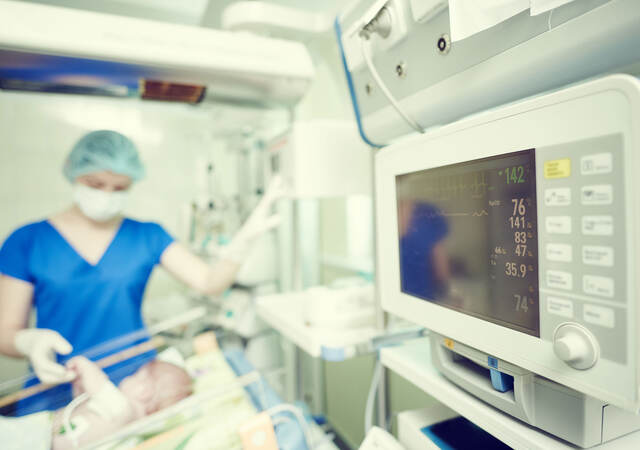May 22, 2023
By Ana Karen Hidalgo Rodríguez
Continuing with our updates over the recently released 5.0 edition of the Supplement of Medical Devices of the Mexican Pharmacopoeia (hereafter: Pharmacopoeia), we discuss the classification rules related to medical devices.
Classification of medical devices based on their level of risk
Appendix II of the Mexican Pharmacopoeia includes the criteria under which medical devices are classified in Mexico based on their risk level.
The established criteria have always been presented as rules, indicating the characteristics of medical devices in relation to their use, activity, contact and permanence with the body. The rules-based system is based on the former Global Harmonization Task Force (GHTF), now the International Medical Device Regulators Forum or IMDRF, and EU Medical Devices Directive MDD 93/42/EEC. In addition, the revised rules appear to consider the EU Medical Devices Regulation 2017/745 (MDR). Understanding and following these rules will help with obtaining a registration for medical devices in Mexico.
There are an additional 12 rules added to the 23 previous rules, 10 of which are related to IVDs, and which will be discussed in another Regulatory Update.
There are now seven classification categories
In this newly published version of the Pharmacopoeia, medical device categories have increased from six to seven, with the seventh exclusive for software as a medical device (SaMD) and its corresponding definition (discussed in our previous update):
- Medical Equipment
- Prosthesis
- Orthesis and functional aids, IVDs
- Dental Supplies
- Surgical and healing materials
- Hygiene products
- SaMD
The categories may seem immaterial to manufacturers, but are used by COFEPRIS regulators in their organization and review.
No changes to the definitions
Some wording of the definitions have changed to provide a better understanding; however, no substantial changes are included in the definitions, besides adding the new SaMD category and the definition of Nanomaterial.
The classification rules continue to be divided into seven groups.
Rules for Noninvasive Medical Devices (Rules 1-4)
Rule 3 was revised to include that all noninvasive medical devices consisting of a substance or mixture of substances intended for in vitro use in direct contact with cells, tissues or organs removed from the human body or used in vitro with human embryos prior to implantation or administration in the body will be considered Class III.
Rule 4 will now also apply to invasive products that come into contact with injured mucous membranes.
Rules for Invasive Medical Devices (Rules 5-10)
There is a new Rule 6 for invasive medical devices in relation to body orifices intended to administer drugs by inhalation. These products will be included in Class II or Class III if their mode of action has a decisive impact on the efficacy and the safety of the medication or are intended for the treatment of conditions that pose a vital risk.
The rule for transient invasive medical devices, now Rule 7, includes clarifications in regards to the vital systems in contact with the product, devices to be put on the teeth, cutting surgical instruments and devices intended for the removal of tissue by puncture.
Rule 8 for short-term invasive medical devices now include clarifications in regards to the vital systems in contact with the product, and devices to be put on the teeth or in the tooth structure.
The rule for prolonged use invasive medical devices, Rule 9, now also includes vital support devices, active implantable medical devices and accessories, breast implants or surgical mesh, joint prostheses and implantable prostheses of intervertebral discs or implantable products that come into contact with the spine.
Rule 10 was added for invasive medical devices composed of substances or combinations of substances that are absorbed by the human body or dispersed locally; these types of devices will be deemed as Class III if they are meant to be absorbed by the human body or in the stomach or inferior gastrointestinal tract, whereas when meant to be applied on the skin, nasal cavity, or oral cavity until the pharynx, they’ll be considered Class II.
Additional rules applicable to noninvasive Medical Devices (Rules 11-17)
There is an update in the rule for active medical devices meant to administrate or exchange energy, now Rule 11, which considers devices that emit ionizing radiation with therapeutic purposes, including equipment for controlling these devices. These products are considered Class III.
Rule 12 for active medical devices meant to diagnose diseases or conditions was updated; previously, this rule only included devices designed to illuminate the body in the visible spectrum. Now the near-infrared spectrum is also taken into account, and these devices will be considered Class I. Also, this rule has some updated wording for a better understanding of the classification of devices intended to allow direct diagnosis or monitoring of vital physiological processes.
A new Rule 13 considers medical devices specifically intended for the management and processing of diagnostic images generated by X-ray radiation as Class II.
There’s also a new Rule 15 to classify all the active medical devices with an integrated or built-in diagnostic function which determines the safety of the patient--such as closed-loop systems or automated external defibrillators--as Class III.
This section of rules includes the classification rules for SaMD in Rule 16.
Special rules (Rules 18-23)
This section includes a new rule for medical devices that incorporate or consist of a nanomaterial (Rule 19), and will be classified as:
- Class I if they have negligible potential for internal exposure;
- Class II if they have a low potential for internal exposure;
- Class III if they have a medium or high potential for internal exposure.
Rules for IVDs (Rules 24-33)
We will discuss Rules 24 through 33 covering IVD devices in an upcoming Regulatory Update.
Rules for Hygienic products (Rule 34)
No changes have been made to this section other than the new rule number.
Rules for Low-risk Medical devices (Rule 35)
A clarification in regards to the risk classification of these devices was added.
Closing Remarks
The new rules for classification of Medical Devices in Mexico will become official on July 10 (60 calendar days after the publication of May’s 10th Notice on the Diario Oficial de la Federación (link in Spanish),confirming when will the Supplement of Medical Devices 5.0 be in effect).
In addition to all the updates stated above, the wording of several rules and sections of the Appendix has been updated in order to facilitate a better understanding of the regulated industry.
In the meantime, Emergo by UL will start considering the new rules to determine the accurate classification of medical devices submitted for COFEPRIS registration in Mexico.
Ana Karen Hidalgo Rodríguez is Quality and Regulatory Affairs Consultant at Emergo by UL.
Request more information from our specialists
Thanks for your interest in our products and services. Let's collect some information so we can connect you with the right person.






